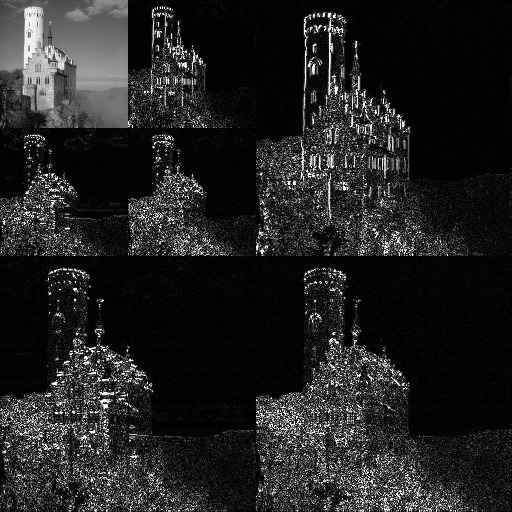Please wait, while our marmots are preparing the hot chocolate…
when analyzing and organizing data
in high-dimensional spaces.* {no} - Term coined by Richard E. Bellman - 1920 − 1984 - dynamic programming - differential equations - shortest path // Bellman-Ford algorithm - What is (not) the cause? - not an intrinsic property of the data - depends on the representation - depends on how data is analyzed - {notes notslide} - we'll see some example - and that it impacts most a lot of things ## Combinatorial Explosion {libyli} - Suppose - you have $d$ entities - each can be in $2$ states - Then - there are $2^d$ combinations to consider/test/evaluate - Happens when considering - all possible subsets of a set ($2^d$) - all permutations of a list ($d!$) - all affectations of entities to labels ($k^d$, with $k$ labels) @svg: curse-of-dim/subsets.svg 700px 150px ## Regular Space Coverage - Analogous to combinatorial explosion, in continuous spaces - Happens when considering {next} - histograms - density estimation - anomaly detection - ... - @anim: #dim1 |#d1points |#dim2 |#d2x |#d2y |#d2grid |#d3x |#d3y |#d3z |#d3cube - @anim: .next @svg: curse-of-dim/covering.svg 800px 300px ## In Modeling and Learning {libyli} @svg: curse-of-dim/overfitting.svg 300px 300px {floatright} - The world is complicated // or any object of interest - state with a huge number of variables (dimensions) - possibly noisy observations - e.g. a 1M-pixel image has 3 million dimensions - Learning would need observations for each state - it would require too many examples - need for an “interpolation” procedure, to avoid overfitting - @anim: .hasSVG | #points | #linear | #piecewise | #ok - Hughes phenomenon, 1968 paper (which is wrong, it seems) - *given a (small) number of training samples, additional feature measurements
may reduce the performance of a statistical classifier{captain}* {no} ## A Focus on Distances/Volumes - Considering a $d$ dimensional space - About volumes {slide libyli} - volume of the cube: $C_d(r) = (2 r)^d$ - volume of a sphere with radius $r$: $S_d(r) = \frac{\pi^{d/2}}{\Gamma(\frac{d}{2} + 1)}r^d$
($\Gamma$ is the continuous generalization of the factorial){captain} - ratio: $\frac{S_d(r)}{C_d(r)} \rightarrow 0$ (linked to space coverage) {captain} - @anim: #dim2 | #dim1 |%dur:1000|#d1mask|%dur: |#dim3 |#dcorners @svg: curse-of-dim/volumes.svg 800px 200px ## A Focus on Distances/Volumes (cont'd) {libyli} @svg: curse-of-dim/volumes.svg 800px 200px @svg: curse-of-dim/average-dist.svg 200px 200px {floatright} - About distances - average (euclidean) distance between two random points? - everything becomes almost **as** “far” - Happens when considering - radial distributions (multivariate normal, etc){captain} - k-nearest neighbors (hubiness problem) - other distance-based algorithms ## The Curse of Dimensionality {image-full top-left darkened /black-bg /no-status fancy-slide bot} - Many things get degenerated with high dimensions - Problem of: approach + data representation - *We have to hope that there is no curse* # @copy: #plan ## Ockham's Razor {image-full top-left darkened /black-bg /no-status fancy-slide top} - Shave unnecessary assumptions. ## Ockham's Razor {libyli} - Term from 1852, in reference to Ockham (XIVth) - *lex parsimoniae*, law of parsimony - *Prefer the simplest hypothesis that fits the data.*// Among competing hypotheses, the one with the fewest assumptions should be selected - Formulations by Ockham, but also earlier and later - More a concept than a rule - simplicity - parsimony - elegance - shortness of explanation - shortness of program (Kolmogorov complexity) - falsifiability (sciencific method) // simple -> more cases -> easy to falsify - According to Jürgen Schmidhuber, *the appropriate mathematical theory of Occam's razor already exists, namely, Solomonoff's theory of optimal inductive inference.{slide}* # Notions of Simplicity // a tour, in learning mostly ## Simplicity of Data: subspaces {libyli} - Data might be high-dimensional, but we have hope - that there is a organization or regularity in the high-dimensionality - that we can guess it - or, that we can learn/find it - Approaches: dimensionality reduction, manifold learning - PCA, kPCA, \*PCA, SOM, Isomap, GPLVM, LLE, NMF, … // (26 algorithms listed on wikipedia (Nonlinear dimensionality reduction), but not only that list, also (feature learning)) - @anim: #manipoints |#manifold | -#manifold,#manipoints |#facepoints |#facespaces | -#facepoints,#facespaces |#manistuff @svg: simplicity/manifolds-etc.svg 800px 300px ## Simplicity of Data: compressibility

 - Idea
- data can be high dimensional but compressible
- i.e., there exist a compact representation
- Program that generates the data
- Idea
- data can be high dimensional but compressible
- i.e., there exist a compact representation
- Program that generates the data(Kolmogorov complexity) {kolmo} - Sparse representations {sparse} - wavelets (jpeg), fourier transform - sparse coding, representation learning - Minimum description length {mdl} - size of the “code” + size of the encoded data - @anim: .kolmo | .sparse | .mdl ## Simplicity of Models: information criteria {libyli} - Used to select a model - Penalizes by the number $k$ of *free parameters* - AIC (Aikake Information Criterion) // http://www4.ncsu.edu/~shu3/Presentation/AIC.pdf - penalizes the Negative-Log-Likelihood by $k$ - BIC (Bayesian IC) - penalizes the NLL by $k \log(n)$ (for $n$ observations) - BPIC (Bayesian Predictive IC) - DIC (Deviance IC) // compute easily from the MCMC simulation (use Expect instead of MLE) - FIC (Focused IC) - Hannan-Quinn IC - TIC (Takeuchi IC) - Sparsity of the parameter vector ($l0$ norm) - penalizes the number of non-zero parameters ## Take-home Message {image-fit top-left darkened /black-bg /no-status /fancy-slide} ## Thank You!
Questions? {image-fit bottom-left darkened /black-bg /no-status /fancy-slide} # That's It!
Questions? {deck-status-fake-end no-print} # Attributions {no-print} ## jared {image-full bottom-left darkened /black-bg /no-status no-print} ## jsbanks42 {image-full bottom-left darkened /black-bg /no-status no-print} ## tech no logic {image-full bottom-left darkened /black-bg /no-status no-print} ## Fixcinater {image-full bottom-left darkened /black-bg /no-status no-print} ## Arenamontanus {image-fit bottom-left darkened /black-bg /no-status no-print} ## Wikipedia {image-fit bottom-left darkened /black-bg /no-status no-print} ## someToast {image-fit bottom-left darkened /black-bg /no-status no-print}
/ − − will be replaced by the title